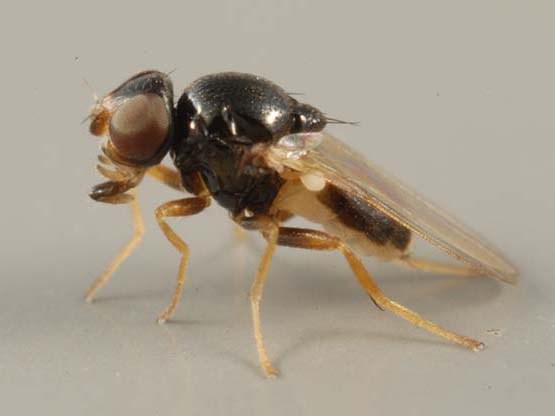Last updated: July 9, 2019
Article
Eye Gnats

Photo: University of Florida
But from July 10 through August 7, 1805 when the Expedition had just passed the Great Falls on the way to the Missouri headwaters, the men endured lots and lots of gnats – the journals note these tiny insects over 10 times during this one month. Lewis's entry of July 12 includes details that clearly identified the species as the eye gnat. "Musquitoes extremely troublesome to me today," he wrote, "nor is the large black knat less troublesome, which does not sting but attacks the eyes in swarms and compels us to brush them off or have our eyes filled with them"
Even though eye gnats were frequently encountered, actual eye issues on the men didn’t seem to be an issue. The gnats are known to cause conjunctivitis, commonly called pinkeye.
Eye gnats are small flies, 1/16 to 1/8 inch long, with shiny black or gray bodies and yellow to orange-brown legs. The adult female will persistently attempt to feed around eyes and wounds, helping to distinguish eye gnats from other small flies that are not attracted to eyes, such as fungus gnats. You will rarely encounter adult males, which do not feed on eye exudates or other animal secretions and are therefore are not a nuisance to humans and animals.
